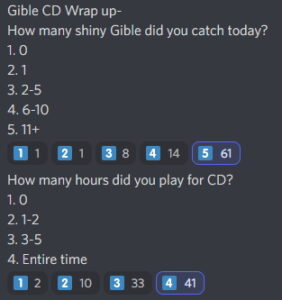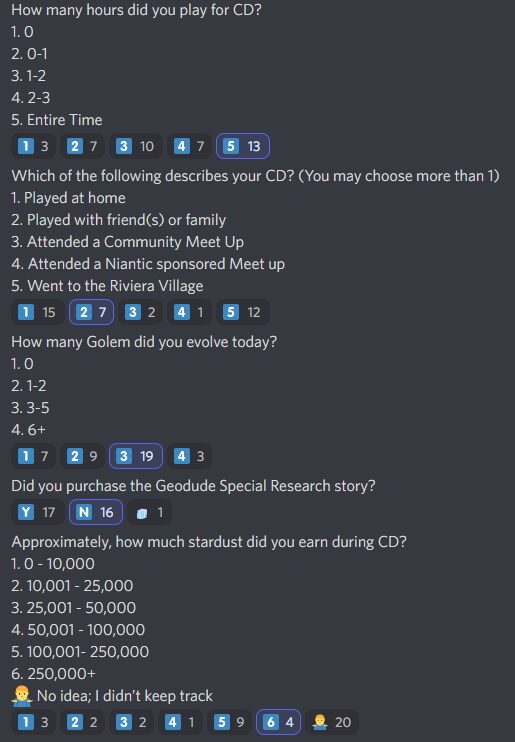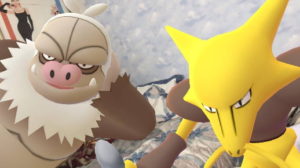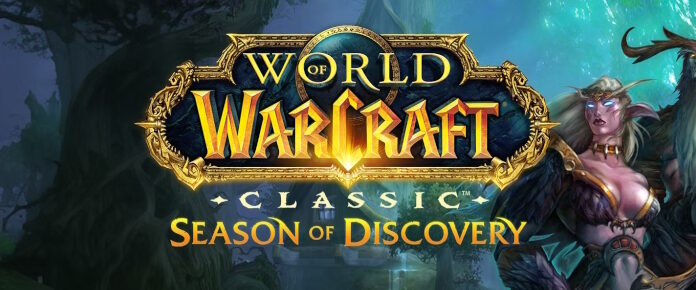
Remember how negative players were about as Pokemon Go’s April Stuffel Community Day? And did you see how angry people on social media were about May’s Alola Geodude? Wait, you didn’t? Well, that’s probably because Niantic hit closer to home by making it more boring.
Yes, that’s right. Boring is perhaps the best most of us can hope for from Niantic these days. Summarizing all Niantic’s done wrong recently – from revoking accessibility and COVID features amid a pandemic to throwing YouTubers under the bus to distract from the company’s grossly misrepresented data – sets the bar pretty low. That being said, while no one’s really cheering about this month’s recent Community Day, no one’s throwing rocks at Niantic as before either, and it’s quite easy to explain.
Deaf to criticism
It bears repeating that since year one, both in public and private, Niantic has some thin-skinned people at the top. Its unwillingness to listen to critics, including those within the company, often leads Niantic to make poor decisions it’s forced to roll back or constantly change. Look no further than the game’s Mega Evolution feature, which is now in its third iteration and still being woefully ignored by most players, and I say this as someone who plays the game with in-person groups.
So when players decried Niantic’s attempt to ignore the current state of the pandemic to roll things back to 2019 as if no one learned how much better the game could be, the company told us that it knows better. And largely, that seems to be a mistake.
Intentional or not, Alola Geodude’s Community Day seems to prove that correct. Niantic wants games to promote exploring, exercise, and socialization, and all three of these were largely a failure last month, in large part because Niantic threw everything at the event without understanding how or why certain design choices cause players to act in various ways.
Stone-cold boring
From the outside, May’s chosen pokemon couldn’t have been much worse. Alola Geodude and its family aren’t particularly powerful pokemon, in PvE or PvP. It was one of the first Alola pokemon released in Pokemon GO about four years ago, and its shiny was released nearly three years ago. It’s not even popular, with none of its family members making the top 30 list in a generation that added 99 new pokemon (81 completely new ones and 18 variants).
Let’s look at some numbers from one of my local communities that does post-event surveys. Notice how May’s event (right) increased its participation this month from 38 to 40 people, though not necessarily increasing the number of people who met with the whole group. Locals already weren’t going to the Niantic official meets, but there was one fewer person who admitted to attending, and as a side note, no one from another group I’m in admitted to going either despite one person going in April.

Remember, at least for this particular group, offering a popular, powerful, or even new pokemon does not mean the event sees higher participation. So I decided to dig up the last truly great six-hour Community Day: Gible Day, as its both a popular pokemon and powerful in at least PvE.

Despite this being a six-hour event, this community’s full event participation was about 47%, compared to Bulbasaur’s 38%. Remember, Bulbasaur is a Kanto pokemon, which tends to have an advantage against later generations, has a released Mega, and is highly relevant in PvE and PvP. Gible is admittedly rarer, but didn’t get a great Dragon-based move and isn’t great in PvP. But it was a six-hour event, and not even for a new pokemon. Niantic tried releasing a new pokemon to stack the odds in its favor, and at least with this community, it utterly failed to make the same impact, failing to even meet the same numbers as another old Alola pokemon, Sandshrew.
I’m sure other factors matter in the three- vs. six-hour debate, such as how far along we were with the COVID vaccine, weather, and even release of other Pokemon games. But as Niantic has made no mention of Gible Day numbers in particular, especially as it came during the summer the vaccine was widely available in the US (so people had more options in how to spend their time), it’s once again pretty clear that not only is the company giving us very biased data but it doesn’t seem to understand what those data mean.
What we do see, though, is that people like the Alola variants. They may not be wildly popular, but they seem to get people out and playing. Full participation is hard to achieve for both six- and three-hour variations, but without flooding you readers with even more numbers, let me just say that COVID-era Community Day numbers were far better for overall participation, especially when pokemon had multiple “it” factors, like being popular, being powerful, or getting a new shiny.
Niantic could just build on that formula, but it didn’t, probably so it can try to slowly milk the playerbase, which from what I’m seeing in this and other local Los Angeles-area communities has been shrinking as the company releases what feels like largely single-target CD pokemon. Stuffel obviously tried to take advantage of multiple effects, but it was overly stacked.
Again, let’s look to our rocky orange friend. While Alola Geodude’s family isn’t exciting, the up to 4x bonus to stardust was. That still gave people an incentive to play, but since it wasn’t popular, powerful, or new, the event relied on auto-catching for the bulk of its “gameplay,” while players just hanging out and walking with friends made the event fun.
That is to say, less work in-game ensured people could both be more social (at least within their pre-defined groups) and able to exercise more. Since players weren’t worried about catching quite as much, Niantic practically passively achieved two of its three stated goals. Using an old pokemon also allowed people to be more prepared with both candy and evolution targets, further cutting down on stress.
In fact, this allowed my personal group to try playing somewhere new, and that was not my request or decision, just a curious friend who also saw the opportunity to mix things up. I think this helps to show that people can be motivated to try new places when the stakes are low. Again, by keeping the event low-key, Pokemon GO actually encourages at least exploration and exercise. Socializing in terms of meeting new people, however, does not feel like Community Day’s strong suit precisely based on what I’ve argued many times in the past: The gameplay isn’t social.
The missing social link
Contrary to our activity on Stuffel day, my group did talk to another group rather than a single individual, but once again, it was for raids, and once again, it was kind of counter-intuitive to Community Day’s focus. Remember, Community Day is a timed event, and doing raids during CD hours cuts down on available time. Again, because Alola Geodude isn’t a high-value target, most people won’t care to give up some of that time, but it’s still an issue.
The group-to-group raid was also a reminder that even though people may ask for help, you’re not exactly playing together. Our groups looked weirdly similar, but mostly it was another guy and me doing the talking across group lines. I was actually “recognized” because I dropped lures, but no one else shared characters or real names despite wanting to exchange friend QR codes. Because QR code exchange was done like a buffet line, I didn’t know any character names until I got home.
In fact, the other group, while friendly, rushed us. My people weren’t immediately ready, with one of our longer-term players having just started a Rocket Battle, which she and I had mentioned. The other group still entered the lobby, which takes away prep-time for anyone who isn’t prepared.
While the data-tracking group previously mentioned has shrunk, my circle of friends who happen to play POGO has increased, as have others. The group that approached us had either newer or less-hardcore players. As the raid lobby started before we were prepared, the shorter count-down made it difficult for me to invite remote players to help make things easier. I couldn’t even form a new team for one of the two raids we did.
Although I was able to juggle the factors better for the second raid and create a raid party specifically to help, it was only within the last 30 seconds. This is important for a future article because despite Megas getting a shot in the arm, I was basically the only one trying to use one to help battle, and being rushed made it difficult not only for me to determine and plan for this but for the others to make teams based on that. We were successful both times, largely because Niantic’s made raids even easier with changes to auto-select team making becoming smarter, but faster wins also mean additional rewards.
I know Niantic is desperate for its games to become social norms, but much as in the dating world, further displaying desperation rarely increases attractiveness. Niantic needs to revert Community Day to its pre-COVID six-hour time in order to boost overall community participation. Getting players to play with other players is currently the function of raids, and that’s what Niantic should focus on.
In fact, I’d argue that having more difficult raids as short-term events, such as the previous raid days, would increase not only socialization but group cohesion and individual player knowledge. I saw this during the Latias/Latios mega raids, but stretching it out over several days was burning people out. Giving people a full day (not three hours) of increased raids of an increased difficulty could increase local community organization and get new players to seek out groups or invite friends to play.
As we’ve mentioned before when going through the research, “alone together” games seem more like socially saturated environments than communities. If Niantic wants meaningful socialization from its games – all of them, not just POGO – it needs meaningful group content that goes beyond what I truly think the tech company heads can understand from both a design perspective and human point of view.
Community Days, as they are not, work best with less clutter. Longer hours actually mean more participants, but this is the one area Niantic seems to love to cut. Better featured pokemon with multiple strengths help that, but mediocre ‘mon with a nice bonus can at least let people enjoy the game without feeling wrathful towards Niantic. Piling bonuses on, at least in my local communities, seems like a huge turn-off, but the fact that social media in general isn’t alight with Niantic hate seems to confirm that. My hope is that enough people at the company can see the lack of complaints as a positive rather than something that indicates a need for further monetization.
 Massively OP’s Andrew Ross is an admitted Pokemon geek and expert ARG-watcher. Nobody knows Niantic and Nintendo like he does! His Massively on the Go column covers Pokemon Go as well as other mobile MMOs and augmented reality titles!
Massively OP’s Andrew Ross is an admitted Pokemon geek and expert ARG-watcher. Nobody knows Niantic and Nintendo like he does! His Massively on the Go column covers Pokemon Go as well as other mobile MMOs and augmented reality titles!


















